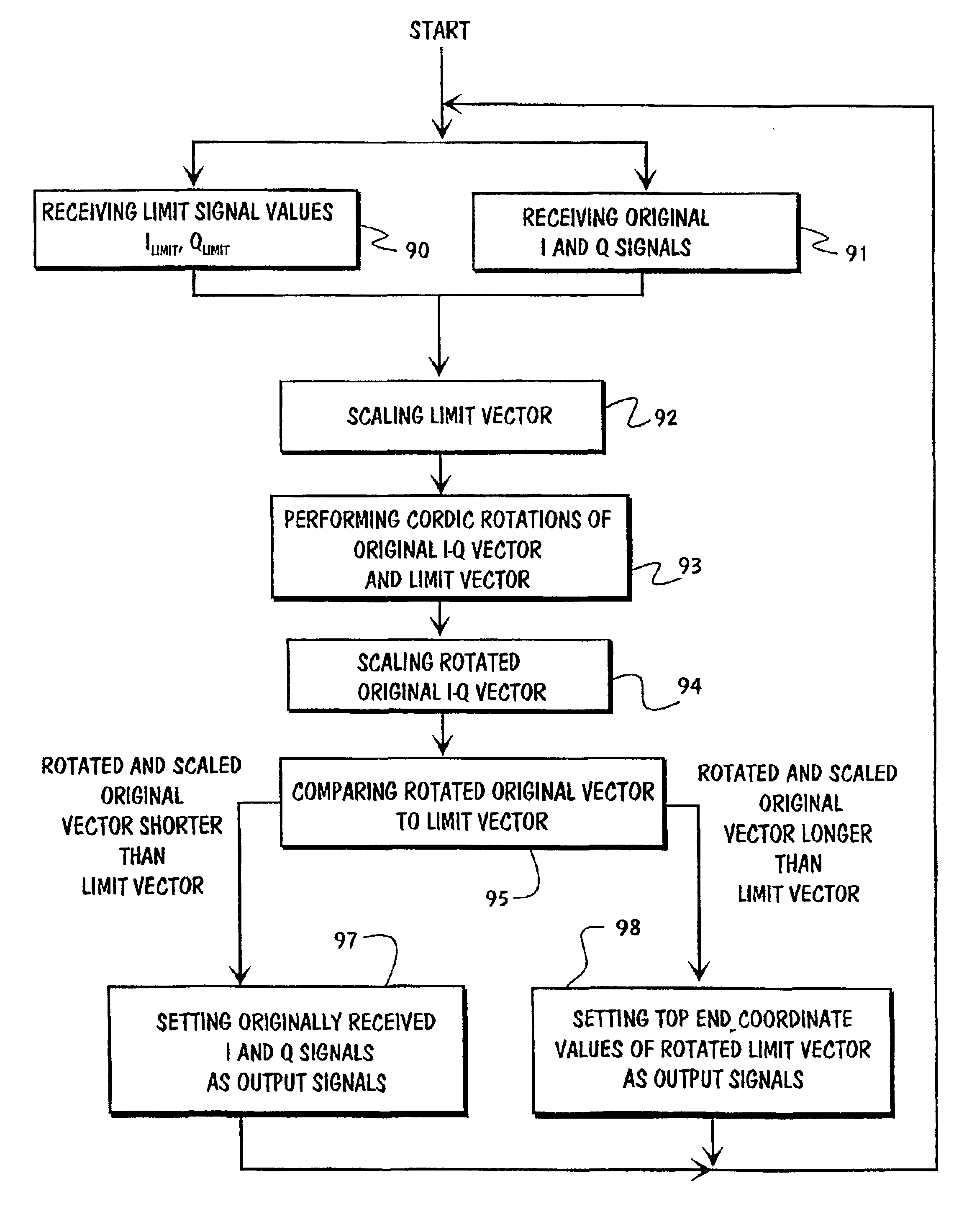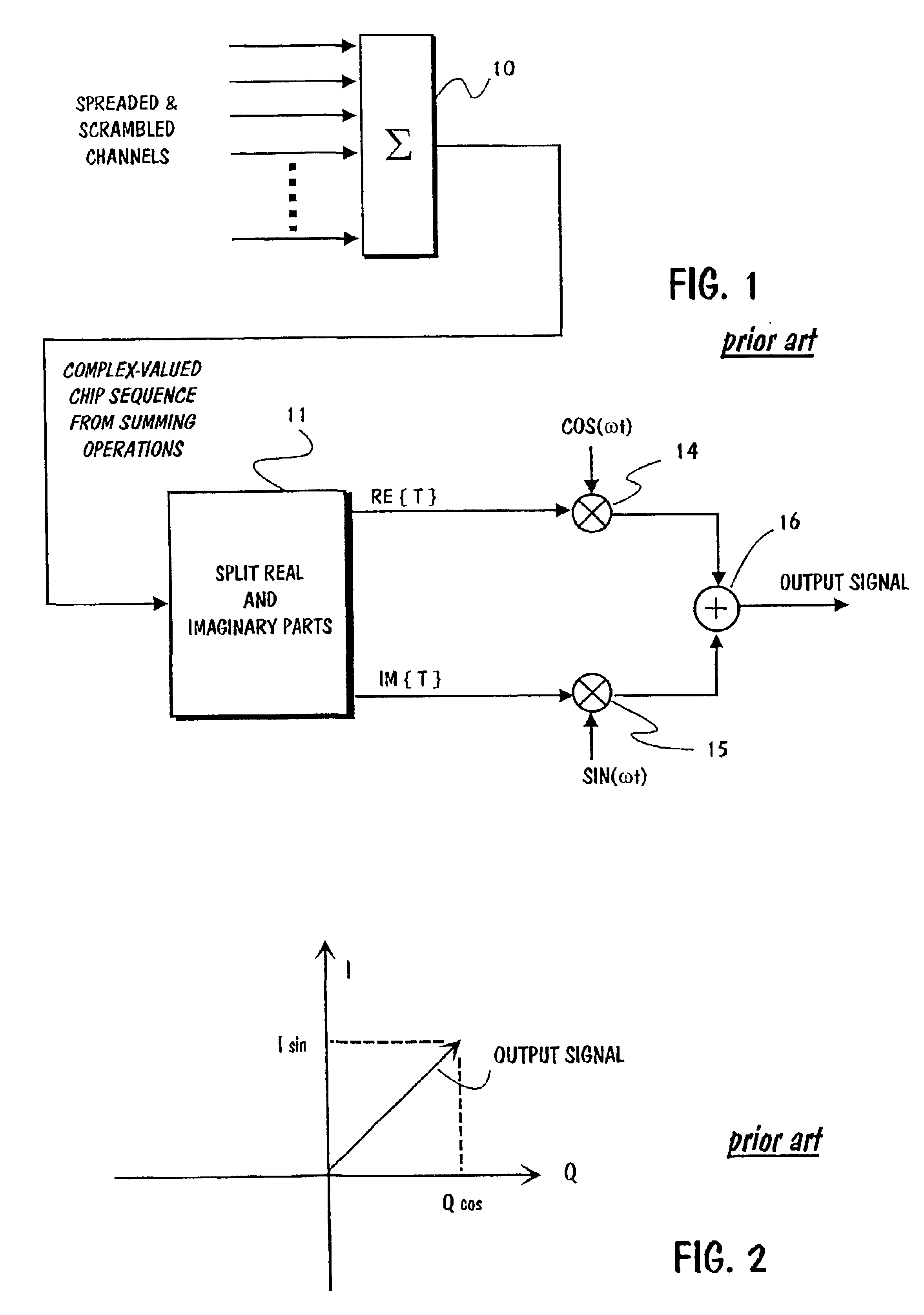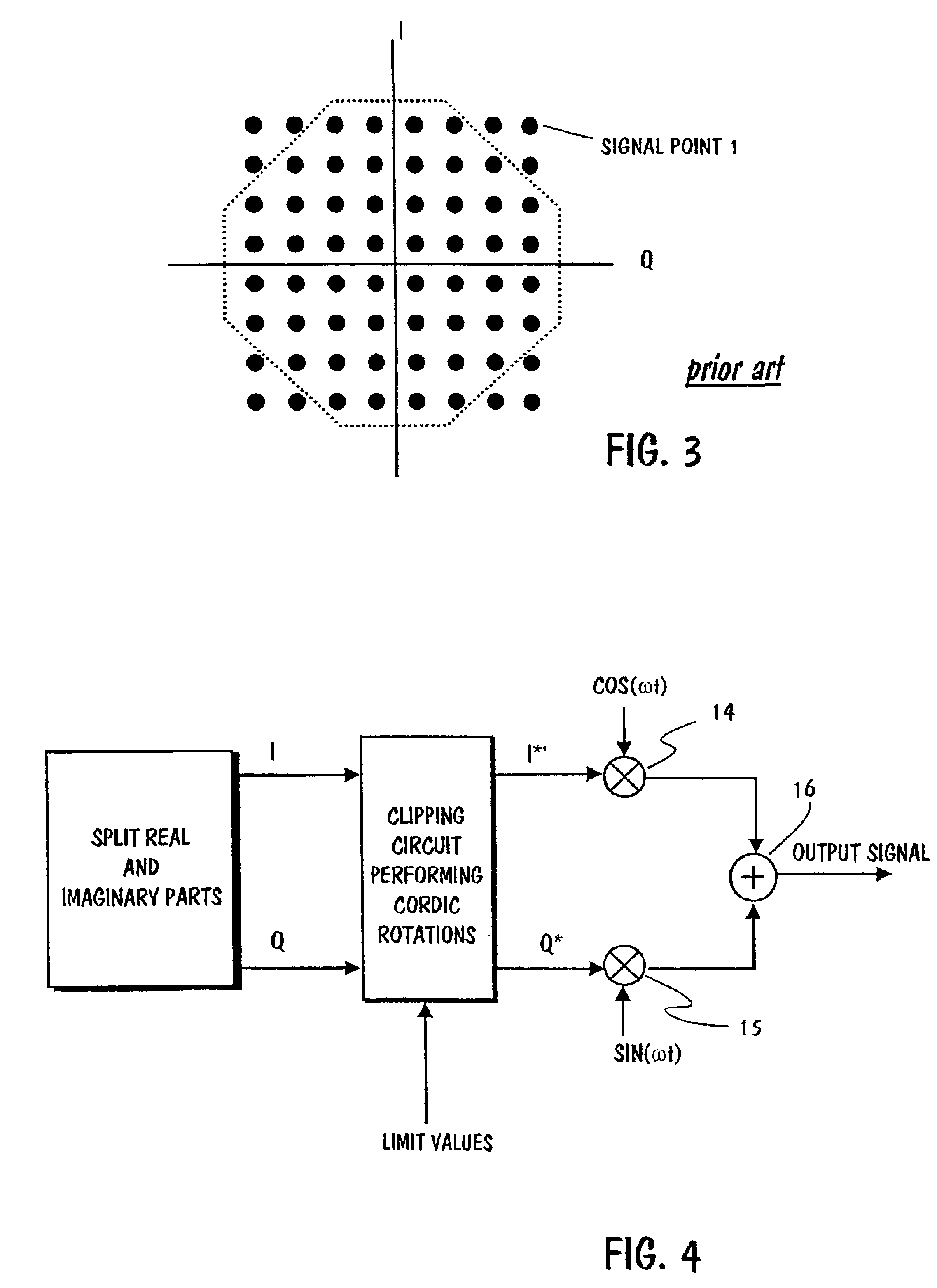Method of clipping signal amplitudes in a modulation system
a modulation system and signal amplitude technology, applied in the field of clipping amplitudes of output signals of digital modulators, can solve the problems of difficult to efficiently implement digital logic, the constellation point of a real modulator is not optimal, and the signal adjacent to the true signal point may be extracted erroneously in the receiver, so as to achieve simple and accurate practical implementation.
- Summary
- Abstract
- Description
- Claims
- Application Information
AI Technical Summary
Benefits of technology
Problems solved by technology
Method used
Image
Examples
Embodiment Construction
FIG. 4 illustrates the location of the clipping circuit in the modulator. As can be seen, it is located between the splitting circuit 11 and multipliers 14 and 15. Hence, I- and Q signals from the splitting circuit are input signals to the clipping circuit. Other input signals to the clipping circuit are two limit values. Output signals from clipping circuit 11 are denoted I* and Q*. Signal I* is applied to multiplier 14 and signal Q* is applied to multiplier 15.
FIG. 5 shows what the clipping circuit does to a signal point having too large amplitude. Each pair consisting of an I-signal and Q-signal forms a signal point called as a constellation point on the I-Q plane. Some signal points are denoted as black dots in the figure. Length S of the vector that starts from the origin and ends at a signal point (I,Q) is
S=√{square root over (I2+Q2)} (4)
Hereafter such vectors are called I-Q vectors.
The previously mentioned limit values, which are also applied to inputs of the clipping circui...
PUM
 Login to View More
Login to View More Abstract
Description
Claims
Application Information
 Login to View More
Login to View More - R&D
- Intellectual Property
- Life Sciences
- Materials
- Tech Scout
- Unparalleled Data Quality
- Higher Quality Content
- 60% Fewer Hallucinations
Browse by: Latest US Patents, China's latest patents, Technical Efficacy Thesaurus, Application Domain, Technology Topic, Popular Technical Reports.
© 2025 PatSnap. All rights reserved.Legal|Privacy policy|Modern Slavery Act Transparency Statement|Sitemap|About US| Contact US: help@patsnap.com



